| Umělec magazine 2006/3 >> We hope that the chinese will forgive us | List of all editions. | ||||||||||||
|
|||||||||||||
We hope that the chinese will forgive usUmělec magazine 2006/301.03.2006 Jiří Ptáček | interview | en cs de |
|||||||||||||
|
We met the young director Lucie Králová to discuss her new documentary Ztracená dovolená (Lost Vacation). Before we switched on the recorder she apologized for not being able to speak freely about the film, since she wants the film to surprise the viewers. But the structure of the interview was clear: we were going to speak about the discovery of 22 sets of negatives documenting a journey of a group of Asians through Europe, what can be read from tourist photographs, and why she decided to make a movie in search of a few citizens of the most populated country in the world. When we scheduled the interview the film was nearly finished and it seemed as though it would not end happily. Suddenly Chinese TV called and invited Králová to Beijing to broadcast their story on an entertainment program. She had always hoped that the lost negatives would find their owners and now it seemed her wish would be granted.
When we heard what Ms. Králová and her team must have gone through to find the Chinese they were looking for, I told them: “We can be glad that the TV station let you know now. If that had happened at the beginning, we would have missed a good detective story.” This all started with the accidental discovery of some negatives. How did that happen? Láďa Jelínek found them, though we did not know him at the time. He was studying architecture and working in Sweden. He had a strange job there; he cleared out apartments in Göteborg, carrying the garbage to trash containers outside. In one garbage can he found a half destroyed and nearly empty suitcase, inside which was a plastic bag with some undeveloped film. He brought the negatives to Prague without knowing what was on them. And later he had them developed? He let it be for a while, but later on his friend Víťa Pavel, who ended up working for our exhibition, was curious about what was on the negatives. When they developed a part of it they accidentally chose the most interesting negative. A shot of a single Asian person, sunbathing clothed. The other pictures were Asians in group photos. But at the time we didn’t know each other. I was preparing a graduate film about mass tourism, which I had wanted to do for a long time. I felt the scenario I had written was too general. I didn’t want to just film masses of tourists. I heard about this finding from someone in a pub, we got in touch, met and decided to make a film about the images. Originally you exhibited the photographs in Mánes. The first idea was to make a film that’s a story which will say something about mass tourism. The photos are exactly like an image in a movie. You show a picture and can find all sorts of information in it; you don’t need to give any analysis. We could easily start from the photos. We thought that we could search for the people and give them their photos back. That’s the story of the film. By doing this we hoped we could investigate what you learn about people just through a photo. We started by asking people in Prague: Chinese people, sinologists. Many people told us that the people in the pictures are Korean or Chinese. As we started our search we thought that it would be useful to know something about the places where the photos were shot. We knew that it was in Scandinavia, but some pictures were of completely unknown fjords. We thought that if people saw the photos at an exhibition there might be some feedback, which was the reason we set up that exhibition. How did you start investigating the photographs and what did you find most important? What was your first idea on how to analyze the photos? We started by using a magnifying glass to search for identifying marks on the cars and hotels. We found a few of them, but it was difficult. An average person has no access to databases of registration numbers which with the exception of a few countries are private. And although the photos were found in Sweden, one of the registration numbers was Danish, another – on the caravan where our group took the photo, was German. That was the level of the detective work. It was important to find out the nationality of the people in the photos. We were skeptical about most answers we got and ended up asking many people. One place we went was Zbraslav where there was just at the time an opening of an exhibition of a Taiwanese painter. It was an important event for the Prague community and there were many Taiwanese people present. They told us that the tourists must be Chinese and that the inscription on one of the photos showed that it was shot on the isle of Hainan. Later we found the hotel where the photo was taken with the help of the Internet. But it was a shock for us to find out that these people are Chinese. We thought we could manage to find them if they were Japanese. But to find a small group of Chinese in China? We were scared, but the challenge interested us. When you found out these were Chinese people, who did you contact for information on Chinese tourism? There is a Chinese association in Pankrác (a part of Prague) headed by a Mrs. Rusková. Opposite Delvita, in a disgusting housing estate is a small space from the 80s with Chinese decorations and a small shop. We contacted them by chance in February, during the New Year’s celebrations. When we asked them about the photos people started to read various things in them. We were surprised how different their approach was from the approach of a European. A European might laugh at one photo or every photo will seem the same to them, suddenly a Chinese takes it in his hand and can say a lot – for example they can read exact information from their faces. What did you learn? For example that these are most likely people form a province in the north of China, meaning from Beijing. From the clothes they found that one of them is probably a villager and that they are rich people, probably clerks or people working for the government. And on the other hand, when a Czech person looked at it, he said “mafia” or “secret agents,” complete opposites. In the group there is a hierarchy. The Chinese recognized that the man in white, who is always in the middle, has an authoritative function. They even recognized which one was his secretary and his second secretary according to who is being photographed next to whom. For example in one photo the group is in front of a cruiser. They told us that the man in white is sitting in a traditional position with spread legs and his hand on his knees. They think he is from a village and later moved into the city, which is why he dresses the way he does. Because the Chinese cannot travel much they told us that this was part of a buisness trip. They probably had some dealings in Europe and made a trip in the meantime with state money. People do that sometimes. Do you know anything about the goals of their trip? We know that they took pictures. Many of them, and in very unusual places. (laugh) Why they were here we don’t know yet, and when we find them I would like to ask. But what can be discovered from the photos is something else. For example in Norway they found a field of dandelions. When we found that same field four years later, we discovered that they had to climb a fence to take those photos. There’s a great view of the countryside. We knocked on the door of the owners of the field and spoke to two Norwegians living there. They told us that it is quite usual there for a bus to stop, people get out, climb over the fence and take pictures. As we traveled around to the same places they did, we became tourists ourselves and we took our own pictures. We thought about why our Chinese did this so often and why they always had one photograph together and then one alone. We realized they must have had one person to photograph them. Maybe a driver or an interpreter. We managed to find two Germans that they took a picture with, and they recalled that they didn’t speak English. So you could reconstruct their trip. Did you find out what they were interested in, if it was monuments, nature or cities and factories? They were mainly interested in dandelions. Most of the material, 756 photos altogether, is from a field with dandelions. We asked about dandelions in China, and learned that the Chinese know about them, but are more interested in wild growth, which they don’t know like we do. Recently there began a trend of traveling in nature, but usually they have everything enclosed and walled up, gardens are in small spaces in which they value spatial harmony. Their approach is completely different from ours. Here they started taking pictures – let’s say in a European way. Still, they never took close ups. They photographed long shots, centralized compositions and staged group photos. Most of the photos are taken in nature and only some are in front of monuments. The only tourist attractions are a ski jump and the city hall in Oslo. They probably began the journey in Germany where they took photos next to the Heidelberg castle. They were probably interested in the attractive and picturesque qualities of the city. They then went to Frankfurt and took pictures in front of some houses on one of the squares. After that they went Scandinavia. We have no photos from Denmark or Sweden. They all come from Norway. Who took the pictures? Are they all from one camera? That’s what our production manager found out. One of the tourists has a very good reflex camera. When the photographer used a flash during the day or made a bad composition, someone else took the picture. So we found out who owned the camera. There must be many other photos from the journey and a video-recording as well, because in the pictures you can see someone holding a video-camera. You said you went on the journey four years after them. How did you know that someone didn’t have the suitcase at home for a year or two and then threw it away? The negatives were found in the garbage can in 2001 but of course we didn’t know whether they were older than that. We were able to find out that they took the trip in May and June because that is when dandelions are in bloom. We found the exact year in a funny way. One picture was of a snowy countryside with a small hut in the background. We drove through Norway and our cameraman suddenly stopped and said: “I recognize this place from the picture.” We found that the hut had changed and there is a huge hotel nearby. We went inside and asked the owner when he rebuilt the hut. Since he had information about the building and what exactly the workers did when, we could deduce that the negatives were really from 2001. You contacted Interpol as well? Yes, but we were disappointed by that. For two months I tried to organize a meeting with a criminologist. I learned that Interpol is also in China but that there is poor communication. In the end I met an Interpol spokesperson, who was very nice but told me that they could not be of any help. Similarly we worked with the Czech police, but I was told that if they didn’t commit a crime, they are not allowed to look for them. Then we realized that if we worked with Interpol and it found our people, we would damage their reputation. And we have to have some respect towards them. We still don’t know how they will react to the numerous people who saw their pictures at the exhibition. How did you expand your investigation to China? Of course we had no money for a journey to China, so we gave some friends of our friends who were going there pictures and a video camera to spread the word. They interviewed many people about what Chinese people see in the photos, but that’s not a systematic search. We kept trying to contact TV stations. Not print media, because in China there are many newspapers, but only with small coverage. There is no one daily newspaper with a huge circulation. We thought it would be great to get it into the news. But working with Chinese television is difficult. We have to worry about censorship, although we are working with people who know the language and their way of thinking. In what way could such material be subject to censorship? Maybe because we don’t know what these people did in Europe... Opinions are various. Some people say that such a story would be interesting in China because it corresponds with China’s attempt to expand internationally both on the cultural and interpersonal level. But as a rule any hint is a symbol for them with many meanings. A similar case was the Chinese version of a popular show Chinese Idol which was enormously successful and became a symbol of democracy. The whole country voted furiously. But back to the media. In Germany we received a clue. There was a Chinese man in the photos from Germany who wasn’t in any of the other photos. Since these photos are from Heidelberg we thought that he probably lives there and that it would be easy to find him since Heidelberg is quite a small city. We got in touch with a local newspaper that distributes 45 thousand copies and they agreed to publish an article. They inserted a photo, circled the person mentioned, but there was no answer. We thought that maybe the people in the photo did something wrong and that is why the person doesn’t want to speak to anyone. The only person who contacted us was a German who had a similar story. He found a negative in the sand on a beach, had it developed and looked at the family. On the cap of one of the men he found a name of an American fire brigade. He sent it to its address and later he got a letter of thanks. The man in the pictures was an owner of a travel agency that organizes expeditions on llamas. He offered the finder a free expedition. We sent Chinese E-mails to China’s main TV station and for a long time we got some strange spam mails in Chinese. But then suddenly we got one e-mail saying “We are interested but we cannot find you.” We didn’t understand, because the e-mail contained all our contact information. Then we again got spams for a long time. And then suddenly they called me on my mobile phone, saying that they like the story very much and they want to use it on the program 360° Searching People. Can you say after this experience what differentiates Asian photo-taking? Not only in China but in the whole of Asia there is something called photo fashion, which means that for a certain time certain gestures are trendy, for example holding your fingers in the shape of V for Victory. On the photos of the ski jump one of our people does that. In the same places we spoke with Asians who made similar gestures. They have for example one way to take pictures by a statue. I have filmed Asians in the same places as on the negatives. When I asked one Asian woman why she was smiling she said “So that they would know I was happy.” I said “Do that again.” She made the same smile and didn’t feel strange about it. Europeans find these photos strange, but God knows how they find our photos. What is important is that when we showed the photos to the Chinese they didn’t understand why we were doing that. The expression in the photos varies also according to age. Young people smile, older people are serious, trying to express the seriousness of the situation. How are these fashions spread? They show the photos to each other. To their friends, colleagues, they make some photos for their friends, some for their boss. Photos are important to them. That’s why we hope that when we find these people, they might be government officials; they might be so affected that they will forgive us for exposing them to such publicity. But I can imagine that our meeting will be trivial. We want to ask them about many things. Why do they shoot these photographs and what does photography mean to them. If the meeting happens, we want to find out if they are capable of a certain kind of analysis of their own behavior.
01.03.2006
Recommended articles
|
|||||||||||||
|
04.02.2020 10:17
Letošní 50. ročník Art Basel přilákal celkem 93 000 návštěvníků a sběratelů z 80 zemí světa. 290 prémiových galerií představilo umělecká díla od počátku 20. století až po současnost. Hlavní sektor přehlídky, tradičně v prvním patře výstavního prostoru, představil 232 předních galerií z celého světa nabízející umění nejvyšší kvality. Veletrh ukázal vzestupný trend prodeje prostřednictvím galerií jak soukromým sbírkám, tak i institucím. Kromě hlavního veletrhu stály za návštěvu i ty přidružené: Volta, Liste a Photo Basel, k tomu doprovodné programy a výstavy v místních institucích, které kvalitou daleko přesahují hranice města tj. Kunsthalle Basel, Kunstmuseum, Tinguely muzeum nebo Fondation Beyeler.
|








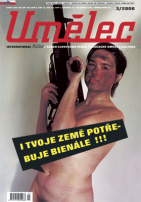









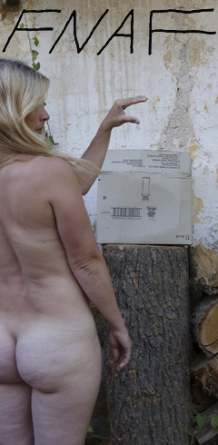






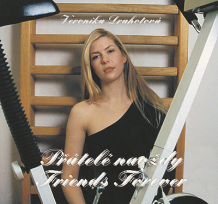




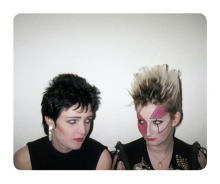
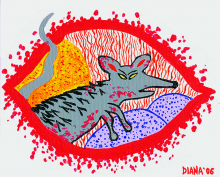

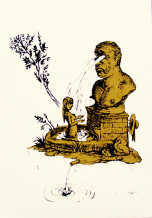


 New book by I.M.Jirous in English at our online bookshop.
New book by I.M.Jirous in English at our online bookshop.
Comments
There are currently no comments.Add new comment